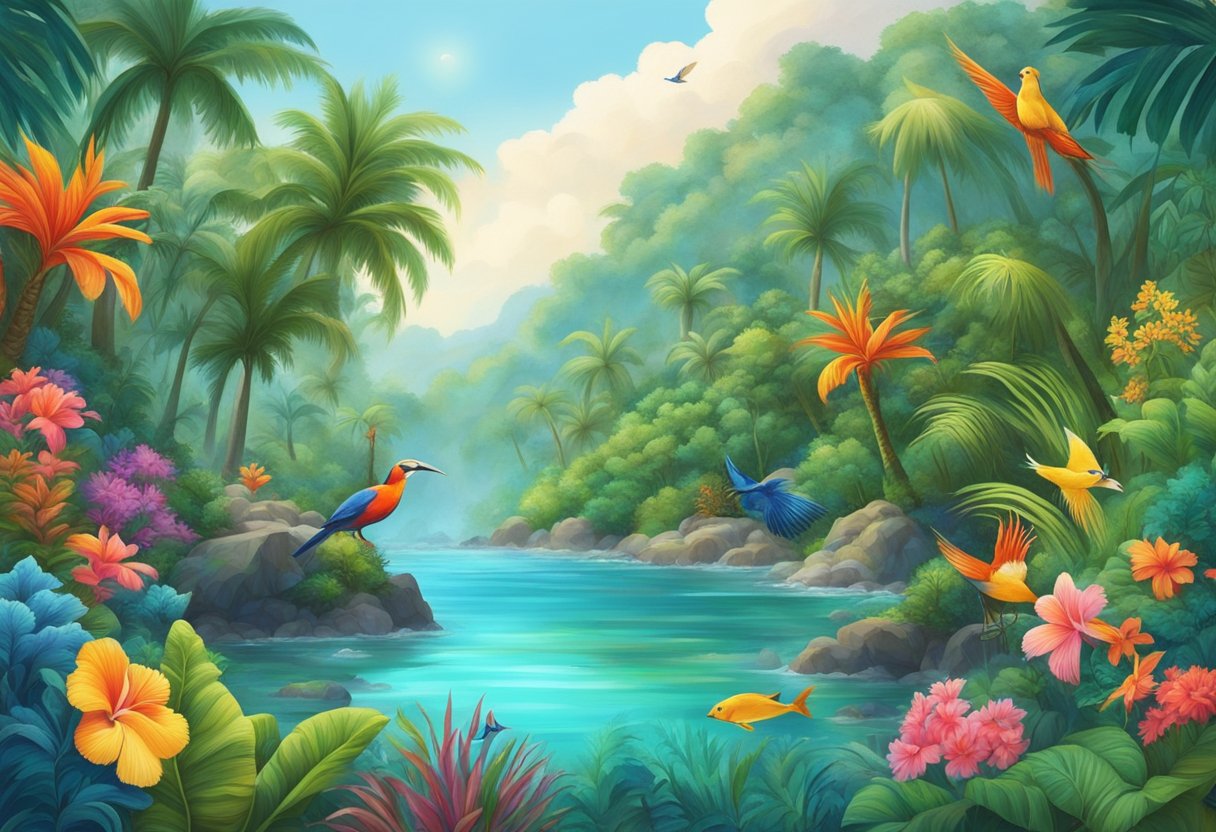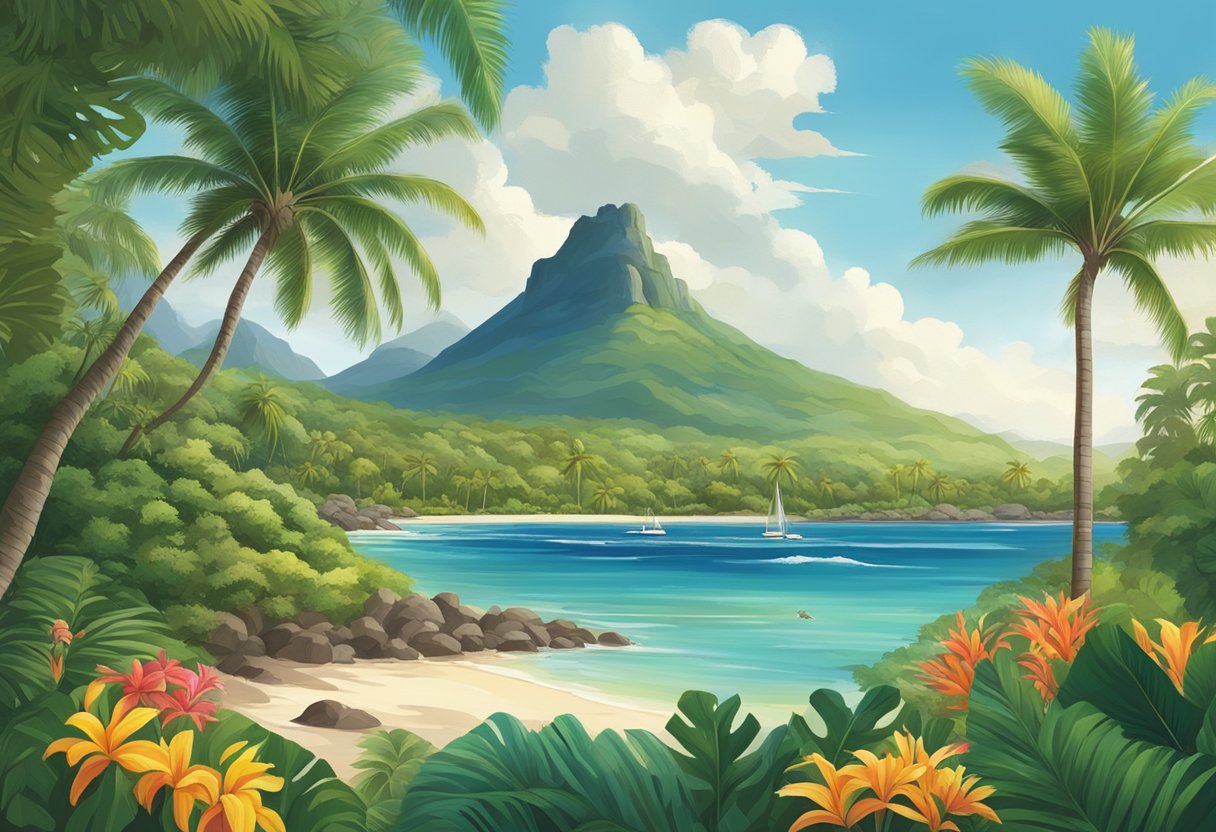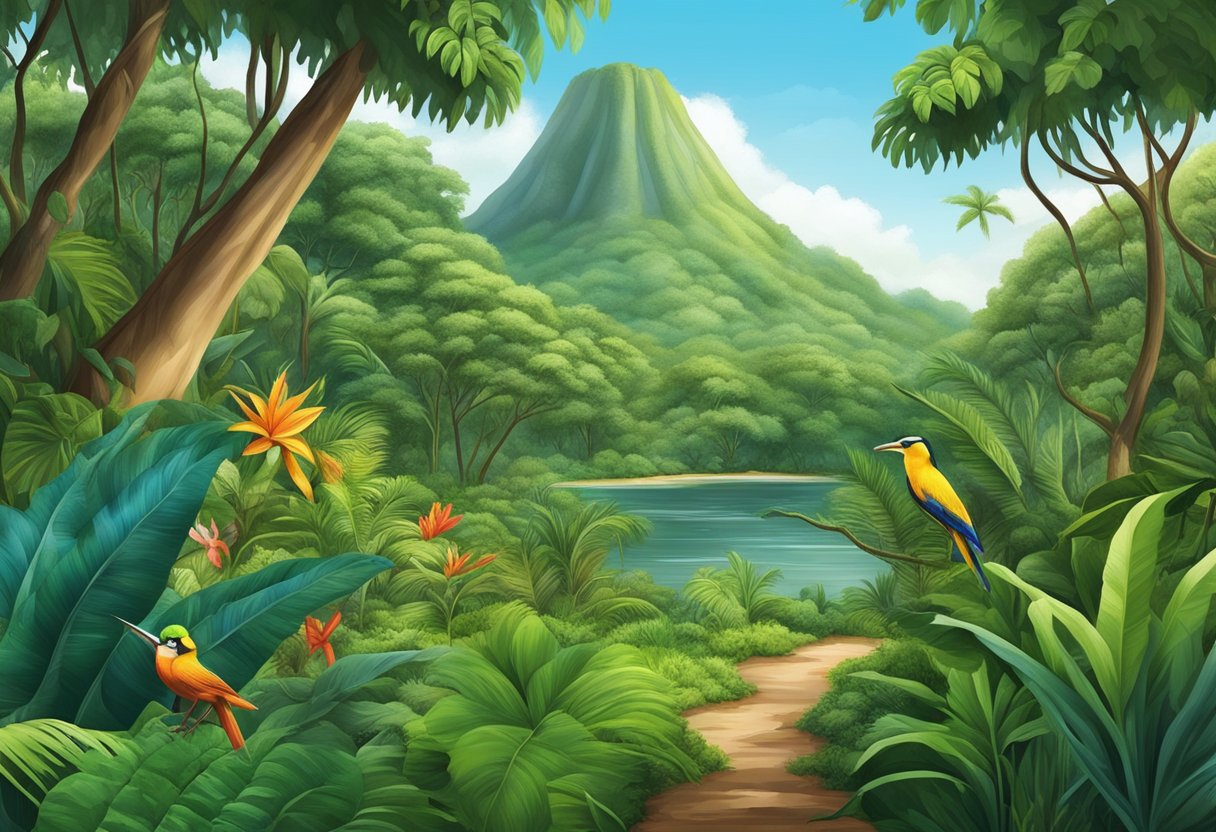Mauritius, an island nation in the Indian Ocean, boasts a diverse range of flora and fauna. As part of the Mascarene Islands, Mauritius has been isolated from continental land masses for millions of years, which has led to the development of a unique biodiversity. Our forests, wetlands, and coasts are teeming with species both endemic and introduced, which together form the intricate web of life that is part of our country’s natural heritage. The biodiversity of Mauritius provides not only ecological benefits but also underpins our economy and supports our cultural practices.

Among the most notable is the array of bird species, some of which are found nowhere else on Earth. Efforts to protect our avifauna have become a crucial aspect of our island’s conservation initiatives, especially for those species teetering on the brink of extinction. Furthermore, Mauritius is home to distinctive flora, including some of the world’s rarest plants that have adapted to our unique tropical climate. These plants are not simply beautiful; they play vital roles in maintaining the health of our ecosystems.
Our commitment to conservation is exemplified in the hands-on projects spearheaded by local organizations. Thanks to their hard work, combined with national and international support, we are on the path to restoring lost ecosystems and fighting the good fight to save some of our rarest species from extinction. The flora and fauna of Mauritius are indispensable to our identity and survival, and we understand the importance of safeguarding them for future generations.
Historical Overview

Mauritius, an island with a rich ecological history, has witnessed the disappearance of a number of its unique species, largely due to human impact. We will explore the extinct species, the emblematic Dodo bird, and the profound influences of human activities.
Extinct Species
Mauritius, once a haven for diverse species, has seen several of them vanish. Among these extinct species, the most recognized is the Dodo. However, it’s not alone; birds like the Mauritius Blue Pigeon and the Mascarene Parrot, plants such as the Angraecum palmiforme orchid, and the reptile Mauritius Giant Tortoise are also lost.
The Dodo: A Symbol of Extinction
The Dodo (Raphus cucullatus), a large, flightless bird, is perhaps the most famous extinct creature from Mauritius. It became extinct in the late 17th century, within less than a century after humans first arrived. This bird stands as a stark symbol of the impact of human activities on native species.
Influence of Human Activities
Our presence on the island has introduced invasive species, leading to competition and predation that native species were not evolved to withstand. Additionally, we have transformed the land through deforestation and the cultivation of sugar cane, which has further contributed to the loss of biodiversity on the island.
Flora of Mauritius
Mauritius is home to a remarkable range of flora, including a multitude of endemic plant species that are under significant threat from environmental pressures. Our focus reveals the intricate balance between these unique plants and the ongoing efforts towards their conservation.
Endemic Plant Species
Mauritius boasts a plethora of plants unique to the island. Among them, the Mauritian ebony trees stand out for their robust wood and historic overexploitation. We find that the magnificent array of endemic species includes not just the ebony but also a variety of orchids and the exquisite Trochetia boutoniana, commonly known as the Boucle d’Oreille.
Conservation of Native Plants
Conservation efforts in Mauritius are pivotal for the survival of these unique botanical treasures. Initiatives such as the Mauritius National Parks and Conservation Service aim to protect the rich biodiversity. Through the establishment of reserves and propagation programs, native plants are cautiously being restored to their natural habitat. We also recognize international partnerships that aid local conservation strategies.
Threats to Plant Life
Unfortunately, threats to plant life in Mauritius are persistent and multifaceted. Deforestation for agricultural expansion, invasive species, and climate change are major challenges we face. Alarmingly, many endemic species are categorized as endangered, their existence hanging by a thread. Our assessment underlines the urgency to address these threats proactively to ensure the flora of Mauritius can thrive for future generations.
Fauna of Mauritius
We explore the diversity and challenges faced by the fauna of Mauritius, detailing the unique wildlife, the threats to various species, and the concerted efforts being made to ensure their survival.
Land and Marine Wildlife
Mauritius is a biodiverse nation rich in a range of endemic species including birds like the Mauritius kestrel and the pink pigeon. Our land wildlife also includes the Mauritian flying fox, various reptiles, and mammals, although many of the mammalian species were introduced by humans. The surrounding coral reefs are home to over 400 marine species, offering a spectacular undersea tableau for species such as dolphins and whales.
Threatened Animal Species
Several species within our wildlife ranks are endangered, with habitat loss and competition from introduced species being significant threats. The Mauritian kestrel was once considered the world’s rarest bird, and the pink pigeon and the Mauritian flying fox have also faced the brink of extinction.
Wildlife Restoration Efforts
Our efforts to restore and protect wildlife are ongoing, with organizations such as the Mauritian Wildlife Foundation leading the charge. Successful restoration programs are evident with the population of the Mauritius kestrel having increased substantially thanks to these concerted efforts. We also actively engage in habitat rehabilitation to support our biodiversity.
Conservation Initiatives
We are confronted with the pressing need to preserve our unique biodiversity. The conservation initiatives in Mauritius are multifaceted, focusing on protected areas, captive breeding, and habitat restoration to ensure that native species flourish for generations to come.
Protected Areas and Reserves
Our efforts have led to the establishment of several protected areas and reserves, such as the Black River Gorges National Park, which is a cornerstone in the protection of Mauritius’s native forests and wildlife. This park plays a crucial role in safeguarding various endemic species, serving as a haven where biodiversity can thrive. Additionally, reserves like Île aux Aigrettes are managed ecosystems that provide a sanctuary for rare species, further bolstering our conservation endeavours.
Captive Breeding Programs
We employ captive breeding programs to bolster populations of endangered species, such as the Echo Parakeet and the Mauritius Kestrel, with marked success. These programs, often a collaboration between the Mauritian Wildlife Foundation and the National Parks and Conservation Service, aim to increase individual numbers in a controlled environment, then reintroduce them into their natural habitats.
Habitat Restoration Projects
Habitat restoration projects are critical to our long-term conservation efforts. We are actively engaged in restoring ecosystems that have suffered degradation. This includes reforestation initiatives and the control of invasive species to revive the natural habitats that are vital for the survival of our endemic flora and fauna. Our work ensures that restored areas can support the lifecycle and growth of local species, mitigating the impact of past deforestation and environmental changes.
Environmental Management
In Mauritius, we place a high emphasis on managing our environmental resources, recognizing that the island’s unique biodiversity is both an invaluable natural heritage and a critical part of our socio-economic fabric. Through concerted efforts, we address invasive species, balance development with sustainable tourism, and enforce wildlife protection laws to safeguard our environment for future generations.
Addressing Invasive Species
Invasive species pose a significant threat to our native ecosystems. We actively work to eradicate or control species that disrupt the ecological balance. For instance, the small Indian mongoose and feral cats and dogs, which impact native wildlife have been the focus of removal and management campaigns.
Efforts in this realm also include habitat restoration projects, such as those conducted by the Mauritian Wildlife Foundation, aimed at reviving entire ecosystems and maintaining the delicate balance of our indigenous flora and fauna.
Sustainable Development and Tourism
We are committed to advancing our economy while ensuring the long-term sustainability of our natural resources. Sustainable development is a guiding principle in our urban planning and infrastructure enhancement. Considerate of our cover, approximately 25% of which is forested, we integrate green strategies in our urban planning.
Tourism is key to our economy, and we prioritize eco-tourism initiatives that encourage environmental protection. Our policies ensure that tourist activities, especially in areas like the marine protected areas, are conducted responsibly, allowing us to preserve the beauty and health of our coral reefs and marine life.
Wildlife Protection Laws
We uphold strict wildlife protection laws to defend our unique species from the brink of extinction. Our legislation enacts stringent measures against poaching and illegal wildlife trade. We follow international protocols and have conservation laws that oversee the preservation and welfare of our wildlife, like the laws outlined in documents such as the National Biodiversity Strategy and Action Plan.
Reinforcing these laws is crucial as they not only protect our terrestrial biodiversity but also extend to safeguarding our marine ecosystems, ensuring that the diverse life forms that call Mauritius home thrive.
Geography and Climate
Mauritius’s distinctive island topography and tropical climate are heavily influenced by its location in the Indian Ocean. Let’s explore how these factors shape its environment.
Island Topography
Mauritius, part of the Mascarene Islands, is a volcanic island distinguished by its rugged terrain and varied topography. The central plateau is surrounded by mountains, with notable peaks such as Piton de la Petite Rivière Noire. The island’s isolation has contributed to a unique landscape, with the colored earth of Chamarel being one of its many stunning natural features. Coastal plains encircle the island, leading to pristine beaches and coral reefs that border the lagoons.
Influence of the Indian Ocean
Our island, nestled in the vast expanse of the Indian Ocean east of Madagascar, experiences the ocean’s profound effects. The surrounding waters regulate our climate, acting as a heat buffer that keeps temperature variations within a narrow range. This also means that marine life is abundant, with the oceanic currents contributing to the rich underwater ecosystem that supports our marine fauna.
Tropical Climate Impacts
Mauritius is characterized by a tropical climate, with slight variations transitioning from a tropical summer to a subtropical winter. Humidity levels on the island are typically high year-round. The weather is influenced by southeast trade winds, which bring in the rains, particularly along the central plateau where heavy rainfall is common. Climate conditions can fluctuate, however; cyclones can occasionally pass near or directly over the island, primarily during the summer months from January to March.
Global and Regional Context

Mauritius stands as a unique biodiversity hotspot within the Indian Ocean, showcasing a range of species that are highly distinct from those found in Madagascar and the Seychelles. It is essential to understand this nation’s flora and fauna within the broader international conservation context.
Comparison with Madagascar and Seychelles
While we share the Indian Ocean’s waters with Madagascar and the Seychelles, our regional ecosystems have evolved differently. Madagascar, significantly larger and geologically older, boasts one of the most diverse ecosystems in the world, with a high percentage of endemism, notably among its lemurs and other mammals. In contrast, the Seychelles, an archipelago of mostly granitic islands, is known for its ancient and weathered landscapes that harbor distinct species, like the unique Seychelles black parrot.
Mauritius, although close geographically, is marked by an absence of indigenous terrestrial mammals, due mainly to our island’s relatively recent volcanic origin. Both Mauritius and Seychelles have fewer land mammal species compared to Madagascar; however, we compensate with our rich avian life and unique plant species. For example, the flora and fauna of Mauritius include 685 species of indigenous flowering plants, with a significant number endemic to the island or the Mascarene Archipelago.
International Conservation Status
Our Mauritian biodiversity holds a tremendous significance on an international scale. Various entities, including the International Union for Conservation of Nature (IUCN), monitor our endemic species to assess their vulnerability and risk of extinction. Several of our unique species, such as the famous Mauritius kestrel or the echo parakeet, have been the subject of international conservation efforts, with Mauritius often cited as a success story for bringing species back from the brink.
Furthermore, our biodiversity’s conservation status is of global interest because changes within our regional ecosystems can have broad implications. Our ecosystems function as indicators of the health of the wider Indian Ocean region—what affects us can often reflect larger environmental shifts felt across the globe. We work closely with international bodies and regional partners to ensure that the conservation status of our unique flora and fauna is maintained and improved where possible.
Public Awareness and Education
Understanding that education and awareness are pivotal to the success of conservation, we leverage various programs and community involvement to protect our unique biodiversity.
Conservation Programs
We emphasize the importance of conservation efforts through structured programs aimed at preserving the natural heritage of Mauritius. Our strategic approach to conservation is showcased by the work of the Mauritian Wildlife Foundation, which is devoted to saving threatened species through ecosystem restoration. This commitment extends to providing environmental education, particularly through initiatives on Ile aux Aigrettes and in Rodrigues, which are centers of endemism and ecological significance.
Community Involvement and Ecotourism
Our community is at the heart of fostering and disseminating awareness about the value of our flora and fauna. We encourage local participation in ecological projects and ecotourism activities that help finance conservation work. For instance, the Black River Gorges-Bel Ombre Biosphere Reserve is not only a sanctuary for endemic species but also a place where education is carried out through exhibitions and seminars. This hands-on involvement reinforces the role of tourism in conservation, giving visitors a chance to experience the island’s biodiversity while contributing to its protection.
Globe-trotting with a flair for the fearless, Sierra Blake crafts vivid tales and insider tips from the world’s hidden corners, inspiring wanderlust in the heart of every reader.

Leave a Reply